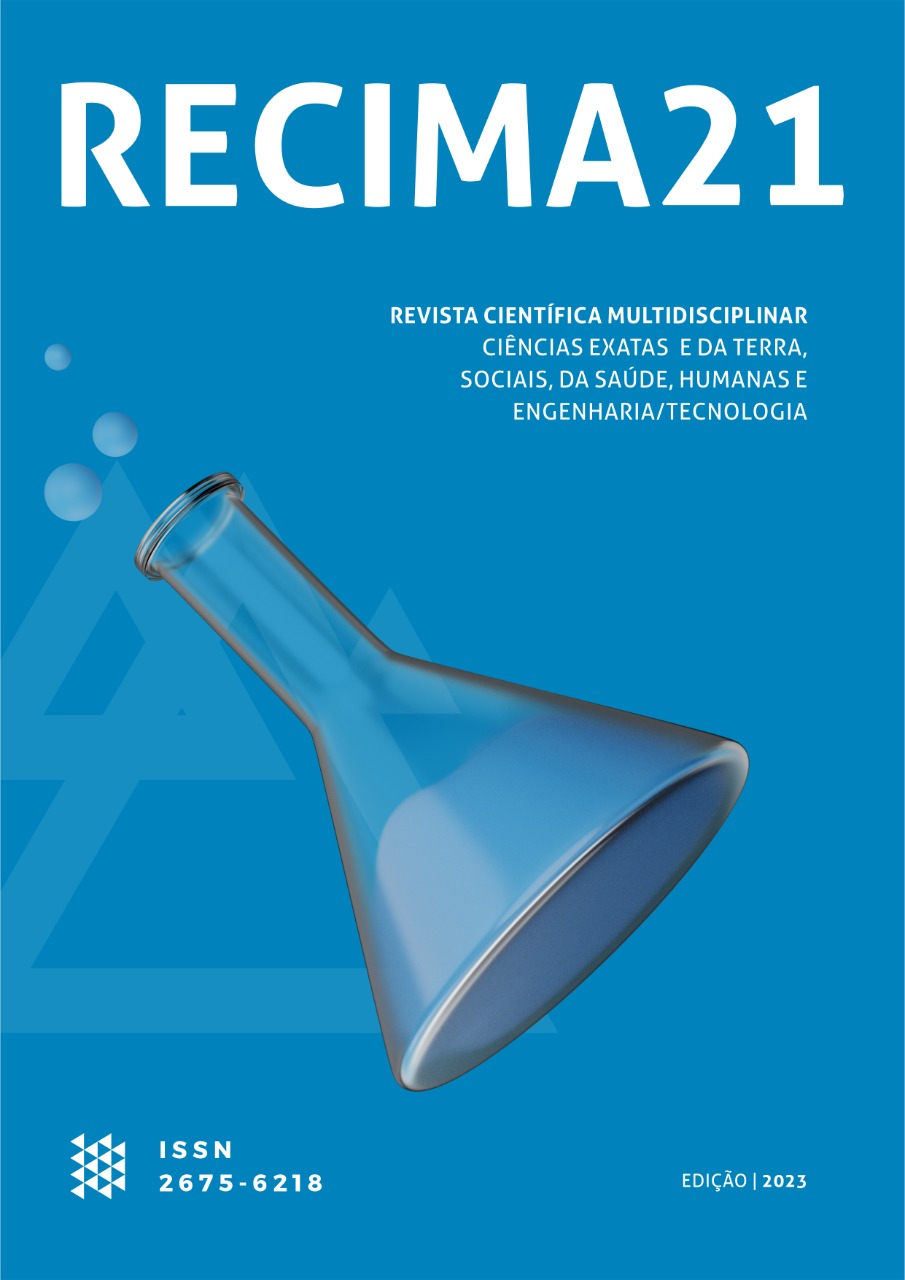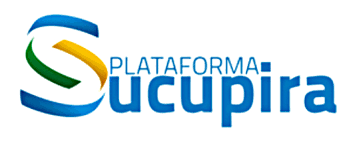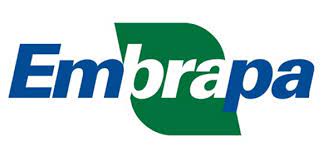ANOREXIA NERVOSA E MICROBIOMA INTESTINAL: UMA RELAÇÃO QUE PRECISA SER ESTUDADA
DOI:
https://doi.org/10.47820/recima21.v4i1.2593Palavras-chave:
Anorexia Nervosa, Microbioma Gastrointestinal, Inflamação, Consumo AlimentarResumo
Introdução: Os transtornos alimentares são estabelecidos como um problema de saúde pública devido complicações somáticas e psiquiátricas, nesse cenário, é percebido um acréscimo no número de casos de anorexia nervosa. Dessa forma, é percebido que a microbiota intestinal está mecanicamente envolvida em mudanças na função fisiológica ao longo da etiologia, progressão e tratamento dos transtornos alimentares. Objetivo: Apontar a possível relação entre o microbioma intestinal na progressão e exacerbação dos sintomas relacionados a anorexia nervosa. Método: Realizou-se um levantamento bibliográfico na base de dados Medical Literature Analysis and Retrieval Sistem on-line abrangendo as seguintes fases: elaboração da pergunta norteadora, busca na literatura, coleta de dados, análise crítica dos estudos incluídos, discussão dos resultados e apresentação da revisão integrativa. A partir dos seguintes descritores na língua inglesa, anorexia nervosa, microbioma gastrointestinal, inflamação e consumo alimentar obteve-se um total de vinte artigos para realização do presente artigo. Resultados e discussão: As interações entre o comportamento alimentar e o microbioma modulam o comportamento do hospedeiro. Ao referir-se a anorexia nervosa, fatores como o aumento da permeabilidade intestinal, presença de inflamação de baixo grau, auto anticorpos e neogênese relacionam-se com alguns sintomas depressivos, ansiosos e do próprio transtorno alimentar, portanto, fatores que contribuem para manutenção do quadro. Conclusão: Dessa forma, é sugerida uma possível relação entre a anorexia nervosa e microbiota intestinal, seja na manutenção e/ou tratamento do quadro, de modo que, a modulação da microbiota intestinal pode ser útil para alterar a história natural dos transtornos alimentares, inclusive da anorexia nervosa.
Downloads
Referências
ALCKMIN-CARVALHO, Felipe et al. Análise da evolução dos critérios diagnósticos da anorexia
nervosa. Avaliação Psicológica, v. 15, n. 2, p. 265-274, 2016.
American Psychiatric Association. Manual diagnóstico e estatístico de transtornos mentais. Tradução
de Maria Inês Corrêa Nascimento... et al.]. Porto Alegre: Artmed, p. 329-341, 2014.
BORGO, Francesca et al. Microbiota in anorexia nervosa: the triangle between bacterial species,
metabolites and psychological tests. PLoS One, v. 12, n. 6, p. e0179739, 2017.
CARBONE, Elvira Anna et al. A systematic review on the role of microbiota in the pathogenesis and
treatment of eating disorders. European Psychiatry, v. 64, n. 1, 2021.
CORRAL, Andrea et al. Trastornos de la alimentación en pacientes hospitalizados en um Servicio de
Salud Mental Pediátrico. Revista chilena de pediatría, v. 90, n. 3, p. 302-308, 2019.
DALTON, Bethan et al. Inflammatory markers in anorexia nervosa: an exploratory study. Nutrients, v.
, n. 11, p. 1573, 2018.
DINAN, Timothy G.; CRYAN, John F. Gut instincts: microbiota as a key regulator of brain
development, ageing and neurodegeneration. The Journal of physiology, v. 595, n. 2, p. 489-503,
GALMICHE, Marie et al. Prevalence of eating disorders over the 2000–2018 period: a systematic
literature review. The American journal of clinical nutrition, v. 109, n. 5, p.1402-1413, 2019.
GRIGIONI, Sébastien et al. Intestinal permeability and appetite regulating peptides-reactive
immunoglobulins in severely malnourished women with anorexia nervosa. Clinical Nutrition, v. 41, n. 8,
p. 1752-1758, 2022.
HANACHI, Mouna et al. Micronutrients deficiencies in 374 severely malnourished anorexia nervosa
inpatients. Nutrients, v. 11, n. 4, p. 792, 2019.
HERPERTZ-DAHLMANN, Beate; DAHMEN, Brigitte. Children in need—Diagnostics, epidemiology,
treatment and outcome of early onset anorexia nervosa. Nutrients, v. 11, n.8, p. 1932, 2019.
JAITE, Charlotte et al. Clinical Characteristics of Inpatients with Childhood vs. Adolescent Anorexia
Nervosa. Nutrients, v. 11, n. 11, p. 2593, 2019.
KANAYAMA, Shunsuke et al. Childhood dietary intake: Comparison between anorexia nervosa and
healthy leanness. Pediatrics International, v. 61, n. 1, p. 73-79, 2019.
KLEIMAN, Susan C. et al. Gut feelings: a role for the intestinal microbiota in anorexia nervosa?. The
International journal of eating disorders, v. 48, n. 5, p. 449, 2015.
KLEIMAN, Susan C. et al. Daily changes in composition and diversity of the intestinal microbiota in
patients with anorexia nervosa: a series of three cases. European Eating Disorders Review, v. 25,
n. 5, p. 423-427, 2017.
LAM, Yan Y. et al. Are the gut bacteria telling us to eat or not to eat? Reviewing the role of gut
microbiota in the etiology, disease progression and treatment of eating disorders. Nutrients, v. 9, n. 6,
p. 602, 2017.
MACK, Isabelle et al. Weight gain in anorexia nervosa does not ameliorate the faecal microbiota,
branched chain fatty acid profiles and gastrointestinal complaints. Scientific reports, v. 6, n. 1, p. 1-
, 2016.
MITHIEUX, Gilles. Gut microbiota and host metabolism: what relationship. Neuroendocrinology, v.
, n. 4, p. 352-356, 2018.
NAKAI, Yoshikatsu; NIN, Kazuko; NOMA, Shunichi. Eating disorder symptoms among Japanese
female students in 1982, 1992 and 2002. Psychiatry research, v. 219, n. 1, p. 151-156, 2014.
NAVARRO-TAPIA, Elisabet et al. Effects of microbiota imbalance in anxiety and eating disorders:
probiotics as novel therapeutic approaches. International journal of molecular sciences, v. 22, n. 5, p.
, 2021.
RAATZ, Susan K. et al. Nutritional adequacy of dietary intake in women with anorexia nervosa.
Nutrients, v. 7, n. 5, p. 3652-3665, 2015.
RUUSUNEN, Anu et al. The gut microbiome in anorexia nervosa: relevance for nutritional
rehabilitation. Psychopharmacology, v. 236, n. 5, p. 1545-1558, 2019.
SEITZ, Jochen et al. Gut Feelings: How Microbiota Might Impact the Development and Course of
Anorexia Nervosa. Nutrients, v. 12, n. 11, p. 3295, 2020.
SOUZA, Marcela Tavares de; SILVA, Michelly Dias da; CARVALHO, Rachel de. Revisão integrativa: o
que é e como fazer. Einstein (São Paulo), v. 8, p. 102-106, 2010.
STEINHAUSEN, Hans‐Christoph; JENSEN, Christina Mohr. Time trends in lifetime incidence rates of
first‐time diagnosed anorexia nervosa and bulimia nervosa across 16 years in a Danish nationwide
psychiatric registry study. International Journal of Eating Disorders, v. 48, n. 7, p. 845-850, 2015.
VAN DE WOUW, Marcel et al. Microbiota-gut-brain axis: modulator of host metabolism and appetite.
The Journal of nutrition, v. 147, n. 5, p. 727-745, 2017.
Downloads
Publicado
Edição
Seção
Categorias
Licença
Copyright (c) 2023 RECIMA21 - Revista Científica Multidisciplinar - ISSN 2675-6218

Este trabalho está licenciado sob uma licença Creative Commons Attribution 4.0 International License.
Os direitos autorais dos artigos/resenhas/TCCs publicados pertecem à revista RECIMA21, e seguem o padrão Creative Commons (CC BY 4.0), permitindo a cópia ou reprodução, desde que cite a fonte e respeite os direitos dos autores e contenham menção aos mesmos nos créditos. Toda e qualquer obra publicada na revista, seu conteúdo é de responsabilidade dos autores, cabendo a RECIMA21 apenas ser o veículo de divulgação, seguindo os padrões nacionais e internacionais de publicação.













